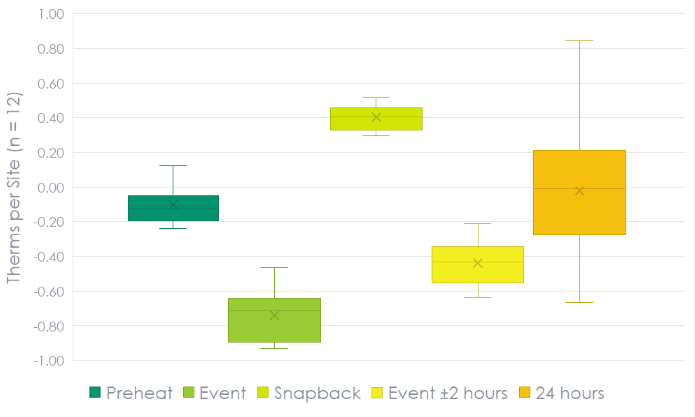Overview
Michaels Energy was hired to conduct measurement and verification (M&V) research for a residential natural gas demand response (DR) pilot program in Colorado’s Mountain region. The clients’ goal was to address pipeline constraints and investigate single end-source demand-side solutions, such as a space heating natural gas DR program, to reduce peak load and defer or avoid costly infrastructure investments. In summary, Michaels Energy was engaged to scientifically evaluate the effectiveness of a natural gas DR pilot program through advanced M&V techniques, with the broader goal of supporting infrastructure deferral and state-level energy transitions.
Our Solution
Our solution was to design and implement two separate M&V Baseline Strategies (a control and treatment study and a 10-in-10 approach) and evaluate the program’s effectiveness and access for future applications. In the control/treatment group, we compared the runtime from Group A to Group B or vice versa. The baseline of this was the actual runtime for the event day. The advantage was the accuracy of the baseline runtime. The 10-in-10 approach created a baseline for each site using the average 15-minute runtime for the previous 10 non-event weekdays. The baseline was a counterfactual for what would have happened on the event day instead of the event. The 10-in-10 approach allows for a comparison between events and sites. During the evaluation stage, we quantified reductions in peak natural gas demand, measured emissions impacts from shifting energy usage, and assessed the effect of thermostat set point adjustments and staggered event start times. We then used these results to assess the possibility of application in broader areas, such as the residential sector. One item we noted was the 90% participation rate among early adopters.
Figure 4 Change in Natural Gas Usage per Site by Event Period
 Key Findings
Key Findings
This study finds that usage is reduced by an average of 0.74 Therms per household during a four-hour natural gas demand response event. The first hour of the event is the most effective at shifting usage, with a reduction of 0.33 Therms per household. Across all events, 6.5% of participants opted out of an event by manually adjusting their thermostats. The events resulted in an overall net reduction in natural gas consumption of 0.25 Therms within a ± 2-hour period. Single start-time events will successfully shift peak natural gas consumption to the beginning of the snapback period but will increase peak demand by an average of 20%. Preheating a household before an event will result in a snapback period increase in peak demand of 7%.
The only consistent approach to both shifting natural gas usage and reducing peak demand is to stagger the start times of participating households. Compared to a baseline scenario, the staggered-start approach results in a reduction of 38.9% in peak demand. Administering a single start-time event will successfully shift natural gas usage during an event but result in higher peak demand than a non-event baseline.

